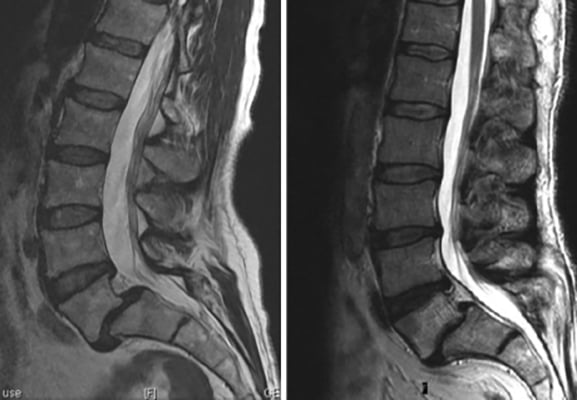- Spondylolisthesis is the forward translation of a vertebra, most commonly L5’. They can be graded as I to IV depending on severity
- Most commonly caused by age related wear and tear or a degenerative disease such as arthritis.
- Other possible causes include fractures a result of sudden injury or continued pressure on the spine such as in gymnasts and weight lifters. Or can be associated with bilateral pars defect that can develop in early childhood due to family predisposition

Subjective History:
Symptoms can start gradually and some may not be aware they have spondylolisthesis at all as it can be asymptomatic, especially if its grade I. Grade II and above slips can present as low back pain with or without leg symptoms. The back pain will often be aggravated by extension activities.
Objective Examination:
Symptoms worsened by extension
There may be a palpable dip at the level of the slip and associated soft tissue abnormalities
Tight hamstrings
References
Image from OpenI – Licensed by CC
Image from OpenI – Licensed by CC
Image from OpenI – Licensed by CC
Refer to Physiotherapy:
With acute symptoms initial management should include rest from aggravating activities
NSAID’s can be used to manage pain as well as spinal mobilisation avoiding the level of the slip
Spinal stabilising exercises can be started as comfortable
Hamstring stretching if symptomatic
Back braces are rarely recommended as they can lead to weakening in the long term
Treatment for athletic patients:
Follow the same guidelines as above with return to sport when they are painfree into extension and can demonstrate good spinal stability
With grade III and IV spondylolisthesis high speed activities and contact sports should be avoided.
If conservative management fails steriod injections or surgical options can be explored if indicated.
References
Image from OpenI – Licensed by CC
Image from OpenI – Licensed by CC
Image from OpenI – Licensed by CC








